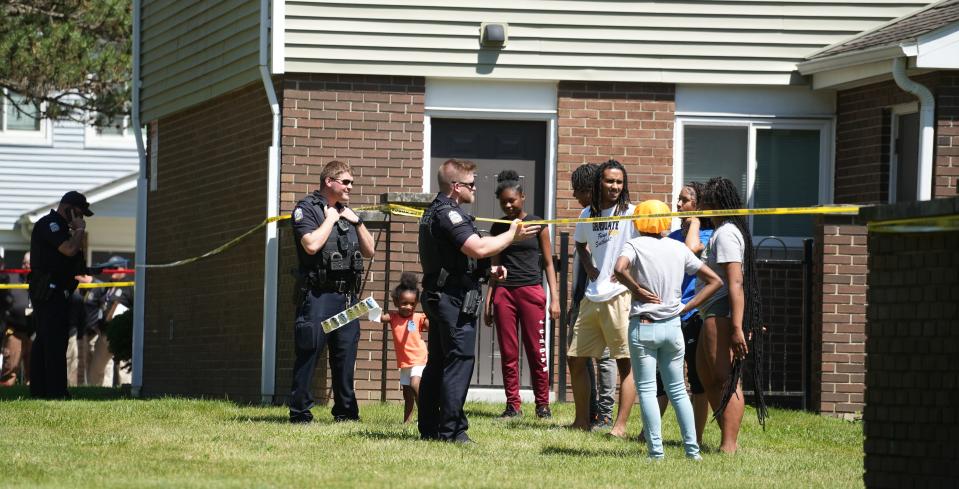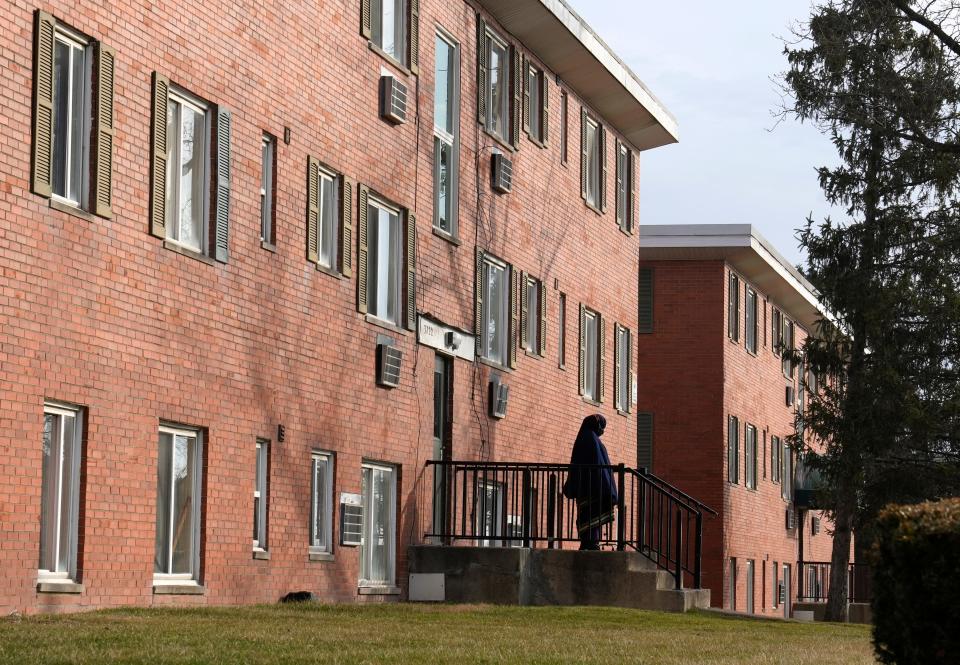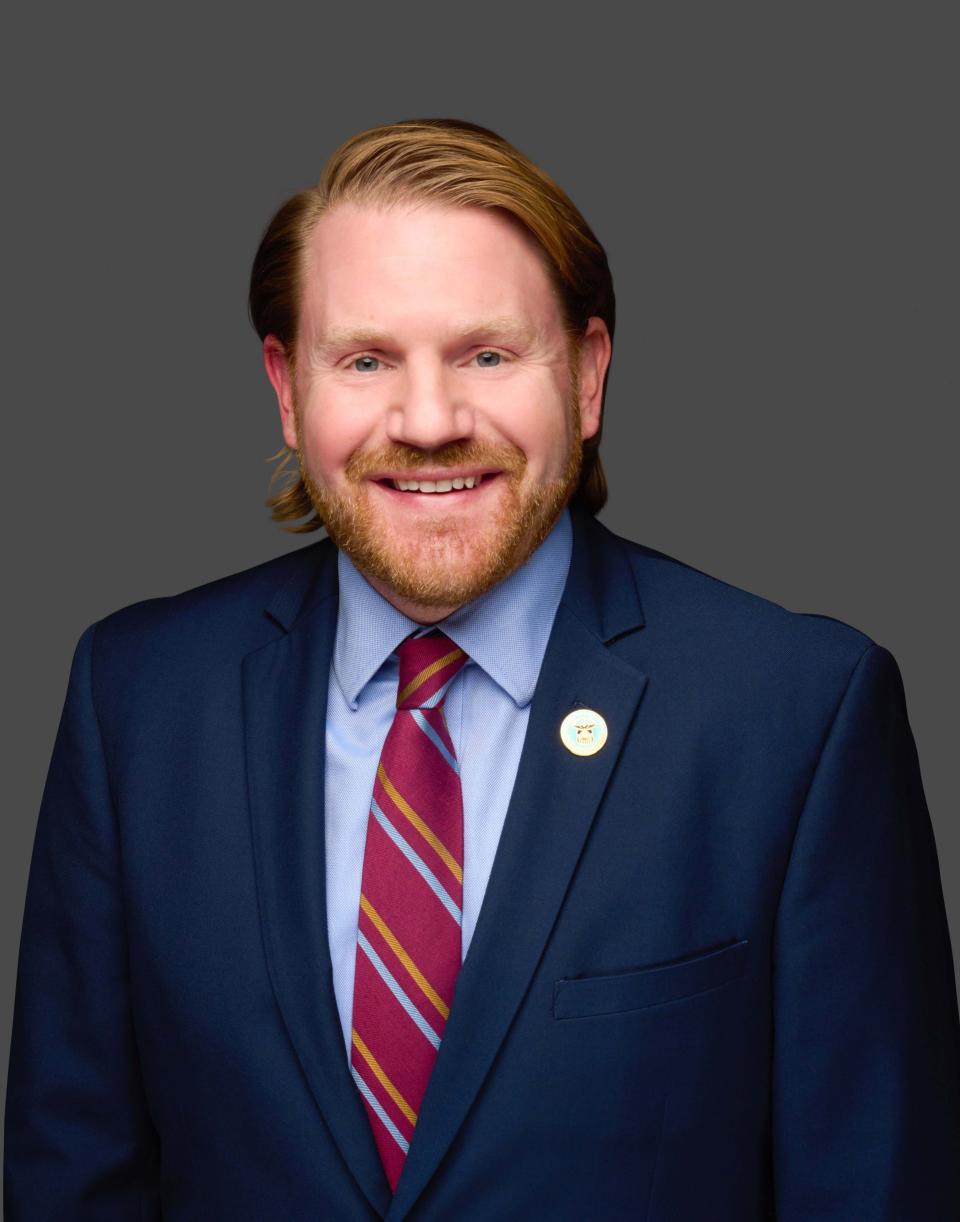More than one-fourth of 2024 homicides in Columbus have taken place at apartment complexes
More than 25% of the homicides in the city of Columbus so far this year have happened at apartment complexes, tied for the highest percentage in the previous five years, according to an analysis by The Dispatch.
The circumstances that led to the homicides vary. Some began as arguments that escalated into guns being drawn, others were claimed to have resulted from self-defense, while some escalated from attempted robberies.

Many homicides in Columbus, however, share common themes. For example, the overwhelming majority of city homicides are committed with firearms, and most of the victims and suspects are Black males.
The Dispatch analysis found another theme that's gradually growing more common: about 26% of the 43 Columbus homicides in 2024 as of June 6 have occurred at apartment complexes, a substantial increase from about 16% last year.
With not even half the year gone, the 26% figure ties the highest percentage of the previous five years reviewed in 2020 — the year many people were cooped up in their residences due to the COVID pandemic.
Here are the rounded percentages and number of homicides at apartment complexes since 2019:
2019 - 16% (17 out of 105)
2020 - 26% (46 out of 175)
2021 - 24% (49 out of 205)
2022 - 19% (26 out of 140)
2023 - 16% (24 out of 149)
While it's nearly impossible to establish causation, one possible explanation for why numbers reached that high in 2020 is because of the onset of the COVID-19 pandemic, forcing people to stay inside to reduce spreading the illness. That same year also saw nationwide unrest and protests over the police killing of George Floyd and the overall economic instability brought about by the pandemic. Around this time, homicides across the country surged by 30%, as reported by NPR based on FBI data.
While homicides can happen anywhere and anyone can become a victim, The Dispatch analysis found many of the homicides that occurred at apartment complexes were in common areas like parking lots where anyone can come and go and where there were no visible security guards.
Concentrated poverty, lack of resources and social disorganization main contributors to crime
Longstanding research has found that crime is often concentrated in specific neighborhoods — including apartment complexes — and that low-income neighborhoods with "concentrated social and economic disadvantages" tend to have higher levels of crime across the board compared to higher-income neighborhoods. Gun violence in particular disproportionately affects Black communities and poor communities of color.
Terrance Hinton, a criminal justice professor and researcher at Ohio State University, said that the percentage of homicides at Columbus apartment complexes isn't surprising, and that population density combined with poverty are major factors.
"When you have a lot of people living on top of each other, clustered in a small area, it's no different than a football game or public event. More people clustered usually means more conflict in general," Hinton said.
But David Carter, a criminology professor at Michigan State University, says that while cities are growing and continuing to add apartment complexes, it does not necessarily mean that it will bring an increase in homicides at those complexes.
Citing the revitalization of Detroit, he said that as the city has added more housing complexes, the crime rate has decreased even with an increase in the city's population.
Instead, Carter said, poverty is more of an indicator of violent crimes as opposed to population density alone.
"There is a strong correlation between violence and poverty. When looking at low socioeconomic neighborhoods, you typically see more crime," said Carter.
Carter, Hinton and other sociology and criminal justice experts agree that "concentrated poverty" creates conditions for other crimes, such as property thefts and robberies.
While poverty alone does not explain violent crime, Hinton said that these property crimes often escalate into more violent events, like felony assaults and homicides. In other words, he said, violence becomes a byproduct of these crimes, which goes back to the issue of poverty.
Combined with a lack of visible deterrents at too many older or lower-income complexes — cameras, security gates, a visible and alert security guard or employment of off-duty police — that communicates to criminals that the risk of being caught committing crimes is low, he said.
"The eye in the sky doesn't lie," Hinton said of having more cameras and other surveillance measures.

Columbus City Attorney Zach Klein told The Dispatch that while the majority of property owners in the city want to provide safe and sanitary housing for residents, it is becoming increasingly difficult for people to find adequate, safe, and affordable housing in Columbus. When it comes to handling nuisance complexes, Klein said his office finds that too often property owners do not want to invest in their properties or the well-being and safety of their residents.
"At the end of the day, it's just pure greed," said Klein. "There are landlords who just want to take money from their tenants, but they don't want to put that money back into the property."
Klein said his office has filed a "record number" of lawsuits against nuisance apartment complexes, and that he tries to work with property owners to address heavy criminal activity and resident safety issues.
"We will not hesitate to sue complexes," Klein said. "The end goal is always to improve safety (for residents.)"
City officials hopeful that 'Zone In' will help prevent crime

As the city of Columbus moves ahead with its "Zone In" rezoning plan to make it easier for development of more apartment housing in the city, particularly along transit lines, will that translate into an increase in homicides at apartment buildings and complexes?
While the "density of poverty" is correlated with crime, urban affairs experts argue that encouraging the development of residential buildings and businesses within the same space can help deter crime and improve safety.
Rob Dorans, Columbus City Council president pro tem and chair of council's Zoning Committe, said that the city's Zone In initiative prioritizes density while also potentially increasing the number of sorely needed affordable housing units.
Dorans said the proposal will help reduce crime since it will encourage the development of mixed-used neighborhoods, where residents have easy access to retail stores, restaurants, businesses, and residential areas. Supporters of mixed-use neighborhoods argue that these areas deter crime because there are more people walking.
Dorans said he believes that the revamped zoning plan will help the city stabilize public safety worries. "We can't keep (expanding outward) and building police substations," he said.
The proposed zoning plan will be the first major overhaul of Columbus' zoning code in more than 70 years. Officials say that the goal of the project is to modernize current zoning regulations and to prioritize density in an effort to develop more housing for an anticipated increase in the city's population in the decades to come.
Touting the new zoning proposal, Dorans said it would encourage mixed-use neighborhoods while also connecting neighborhoods, people, and businesses to each other. "We want to see more connected neighborhoods and more people interacting with each other and on the street," he said.
Dorans also pointed to multiple U.S. cities that are high density and low crime, such as Boston, Massachusetts, optimistic that they can be a model for how Columbus approaches zoning and development. He also pointed out U.S. cities like St. Louis, Kansas City, and Indianapolis that are not as densely populated but have high crime rates.
Dorans said the current zoning code does not allow for mixed-use development, and it segregates people while prioritizing vehicle usage as opposed to encouraging walking or taking public transportation.
Todd Litman, director of the Victorian Transport Policy Institute, believes that cities can address poverty, and crime by extension, by encouraging more people from middle-class backgrounds to move into cities and encourage them to live in mixed-income neighborhoods.
However, he also warned that if not done correctly, this can lead to gentrification and displacement of poorer people.
Challenges, solutions for addressing violence at apartment complexes
While experts agree that violent crime is a byproduct of poverty, there is disagreement at the policy level on the best way to address it. Hinton says there is a belief that taking a punitive or criminal justice approach is the answer.
"You can punish (criminals), but you're not addressing their bottom-line needs," Hinton said. Yet doing both is out of the scope of traditional law enforcement and criminal justice, he added.
"Do we really want (law enforcement) to be both the police and social workers?" he asked.
Klein said that while there is no "one-size-fits-all" approach to addressing problematic apartment complexes, his office has found success in working with residents and property owners to implement changes, from community engagement with youth to making sure that owners install added security measures such as cameras, gates, and even private security.
He acknowledged that the residents in these complexes often face a litany of challenges, such as economic or financial issues, language barriers, and issues of cultural integration.
Using Wedgewood Village Apartments as an example, Klein said that although the troubled complex has still had homicides, the ownership has worked with the city to add security cameras and has seen a decrease in 911 and service calls.
Klein attributes this improvement to youth engagement projects by nonprofits and police at the complex, and the establishment of a residents' council to address crime and violence.
Jim Harrigan, property manager for Wedgewood Village Apartments, said he's taken steps to increase safety at the complex, like installing cameras, upgrading lighting and paying Columbus police for added security, The Dispatch previously reported.
"Everyone, regardless of income, deserves a safe place to live," Klein said.
@ShahidMeighan
This article originally appeared on The Columbus Dispatch: 26% of 2024 Columbus homicides have taken place at apartment complexes


